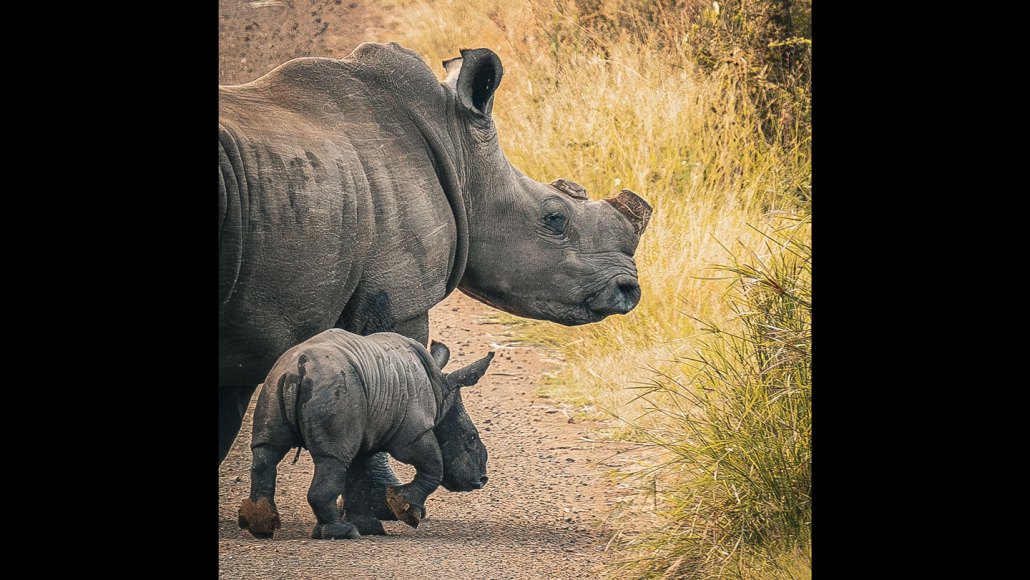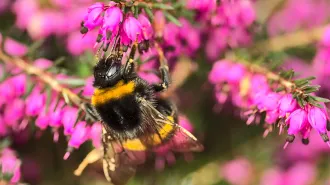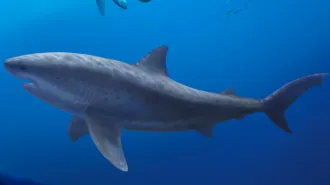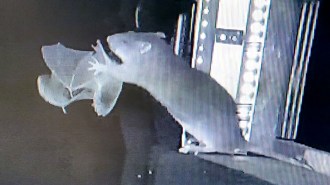Preemptively cutting rhinos’ horns cuts poaching
The strategy abruptly reduces poaching rates by about 78 percent

This mother rhino, walking with her calf, has had her horn removed proactively, a tactic that can reduce poaching rates.
Tim Kuiper
Rhino poaching may be substantially reduced by removing the reason so many rhinos are poached in the first place: their highly valued horns.
Dehorning rhinos dramatically drops the poaching rate compared with other tactics, researchers report June 5 in Science. The researchers suggest that no other anti-poaching intervention — such as protective fencing or higher concentrations of rangers — has such a measurable effect.
The illegal trade of rhino horn is a dire conservation threat for the world’s five rhino species, with poaching pressure driving the rapid decline of Africa’s black and white rhinoceroses over the past decade. This is despite years of substantial human effort. Throughout 11 reserves across South Africa’s Kruger National Park and the surrounding region, 1,700 rhinos were killed between 2017 and 2021, says Jo Shaw, CEO and rhino conservationist at Save the Rhino International in the United Kingdom.
“The expense of protecting rhinos is immense,” says Markus Hofmeyr, a wildlife conservationist and director of the Rhino Recovery Fund, which is based in Western Cape, South Africa. In the Greater Kruger between 2017 and 2023, the equivalent of about $74 million was spent on anti-poaching measures.
Shaw, Hofmeyr and their colleagues wanted to test which anti-poaching practices were the most effective so those funds and efforts could go to the best approaches for protecting rhinos. These tactics include dehorning, which removes the incentive to poach the rhino directly. It also avoids the issue of corruption that can plague other approaches. Cameras, dogs and rangers can be avoided by poachers with the right inside information, but a rhino is either dehorned or it isn’t.
The team compiled data on anti-poaching strategies and poaching incidents from 2017 through 2023 in the 11 reserves. Using a series of mathematical models, researchers compared the intensity of each local anti-poaching intervention with the poaching rate. In all, the researchers documented the poaching of 1,985 rhinos over those seven years, with over 2,200 rhinos being dehorned over eight of the reserves.
Dehorning costs made up only 1.2 percent of the total amount spent on anti-poaching efforts, but it was associated with sharp drops in poaching rates. Dehorning the rhinos on a reserve led to roughly three-quarters less poaching. Other approaches didn’t have an effect. The team found that the risk of a given rhino being poached within the year decreases by 95 percent if its horn is removed, dropping from 13 percent to 0.6 percent.
However, the tactic isn’t perfect, nor permanent: 111 dehorned rhinos were still poached, since some horn is left behind and cut horns can regrow. It may be that in environments where there is much corruption in law enforcement, conservation staff and the judiciary — which can directly sabotage conservation efforts — dehorning is appropriate as a quick, but temporary method of cost-effectively curbing rhino poaching, Hofmeyr says.

Jasper Eikelboom, a wildlife ecologist at Wageningen University & Research in the Netherlands, says it’s difficult to compare the effect of dehorning with interventions such as ranger patrols, which were likely happening extensively during the entire study period.
“But still, the clear benefit of dehorning to reduce local poaching rates is striking and finally provides some good news regarding rhino poaching.”
Eikelboom cautions that this doesn’t necessarily mean that dehorned rhinos won’t be targeted by poachers anymore.
“The poachers always had the option to target non-dehorned rhinos, which provides a higher reward for poachers. So, it makes sense that poachers prioritize targeting non-dehorned rhinos over dehorned ones, if both are available in and around the same area,” Eikelboom says. “It raises the question ‘what will happen if virtually all rhinos in southern Africa are dehorned?” In theory it could mean that the poaching levels will go back to the situation before the large dehorning campaign,” with poachers going after the stump left behind from dehorning.
For Shaw, the findings show that dehorning is effective when used alongside a suite of other approaches and tools. “Dehorning is a short-term solution, and our long-term vision is to have rhinos with their horns on in safe habitats.”







